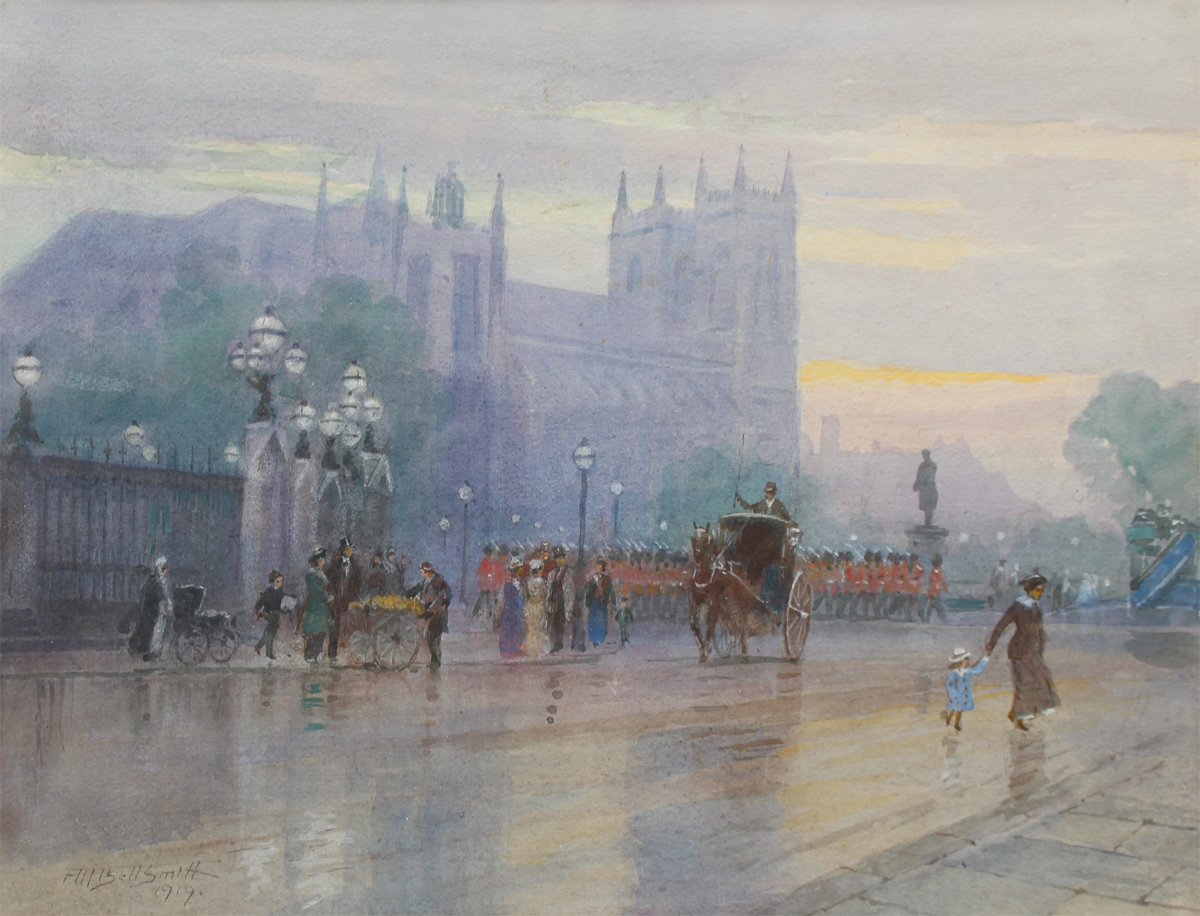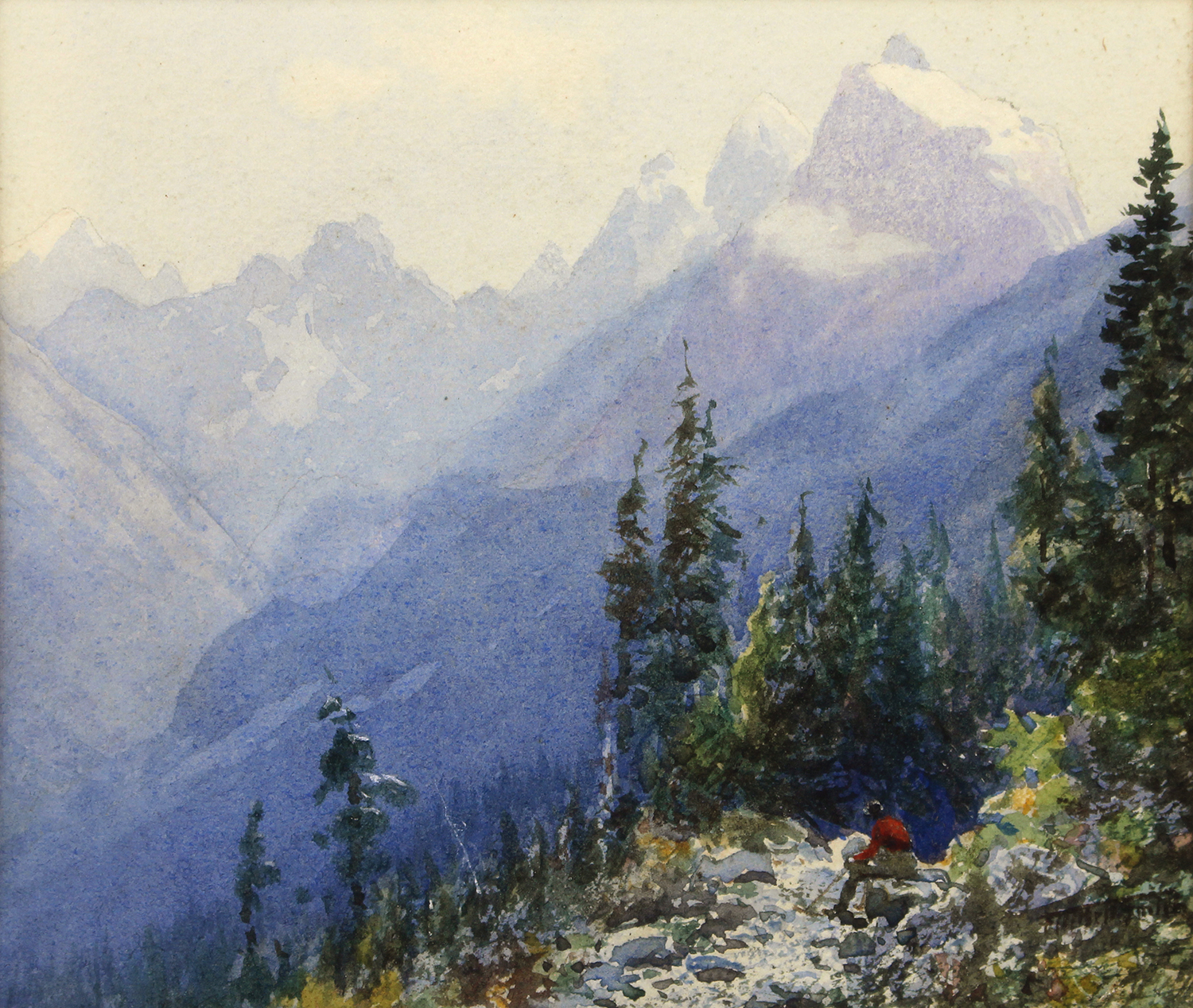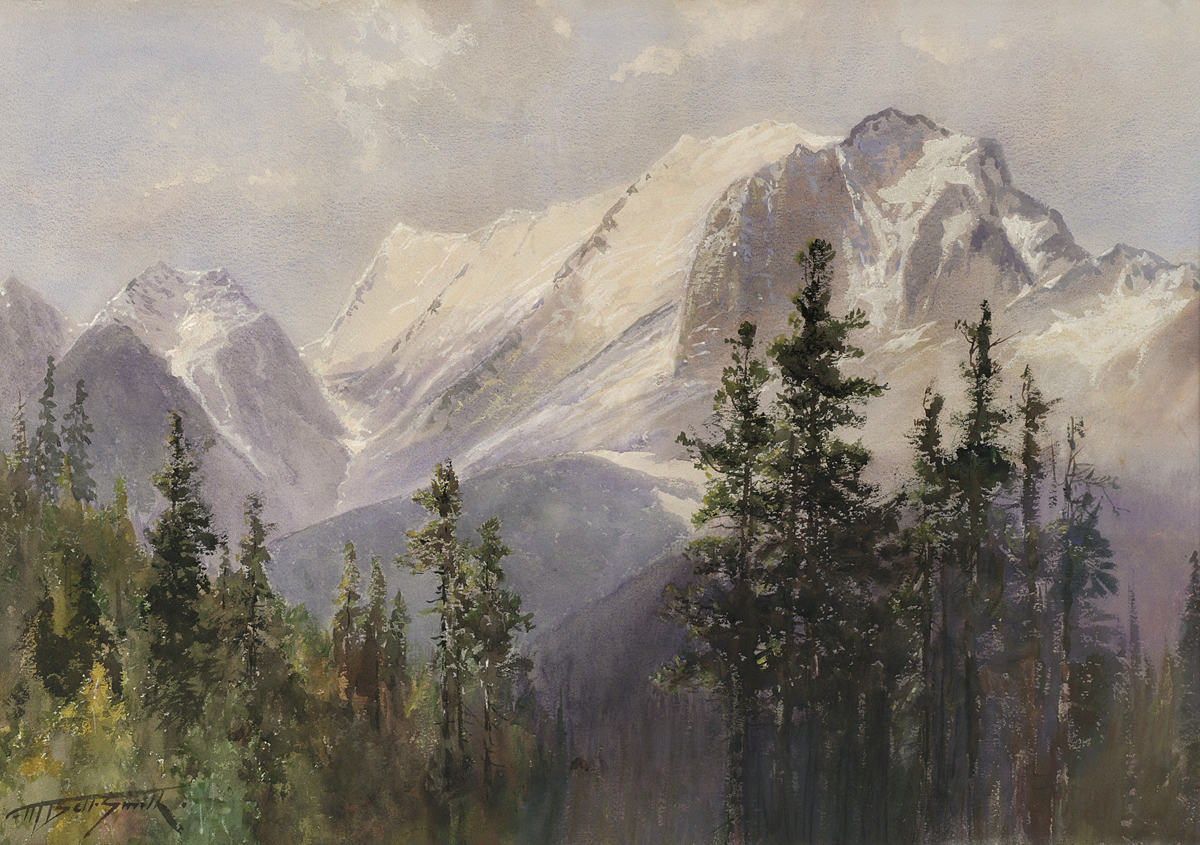FREDERIC MARLETT BELL-SMITH
Canadian 1846-1923
Biography
AVAILABLE WORKS
SELECT SOLD
Frederic Marlett Bell-Smith was born in London, England in 1846, the son of John Bell-Smith a miniature portrait painter. He received early training from his father and later completed classical studies at the South Kensington School of Art and the Academie Colarossi in Paris with Joseph Blanc, Gustave Courtois, Edmond-Louis Dupain, and Alexander Harrison. He and his family immigrated to Canada in 1867, settling in Montreal. Soon after their arrival in Canada, Frederic Bell-Smith began working at James Inglis’ photography studio, where he retouched and tinted photographs with oil and watercolours. Between 1872 and 1884 Bell-Smith worked as a freelance artist, and also took up teaching at art schools in Ontario in order to subsidize his artistic passion. Both Frederic and his father were founding members of the Society of Canadian Artists in their attempt to create the Canadian version of the prominent artists’ organizations that were popular in Europe during this time. Frederic was also a founding member of the Ontario Society of Artists in 1872. He was elected an Associate Member of the Royal Canadian Academy in 1880, to which he was elected a full RCA member in 1886.
In 1868, Frederic Bell-Smith’s first exhibition at the Art Association of Montreal was composed of a group of watercolours featuring sports events and English scenes, reminiscent of his birthplace. In the 1880’s, Bell-Smith worked alongside Marmaduke Matthews and Thomas Mower Martin in a group known as the Railroad Painters, who were hired by the Canadian Pacific Railway to record the construction of the railroad through the Rockies. Bell-Smith contributed several drawings of the west to the Canadian Illustrated News that were used as promotional material to encourage tourism and immigration to this developing area.
Bell-Smith’s first formal excursion through the Rocky Mountains in 1887 on the newly built Canadian Pacific Railway marked a notable change in his subject matter as he strived to capture the sublime beauty and boldness of the rugged Canadian landscape. Along with photographer William Notman Jr. and Lucius O’Brien, Bell-Smith was one of the first Canadian artists to take advantage of this promotional program organized by the President of the Canadian Pacific Railway. This trip provided him with access to Western areas including Banff, Kicking Horse, the Selkirk Mountains and Victoria Harbour. In painting these untamed landscapes he excelled at capturing the atmospheric effects created by the vast mist, endless lakes and cascading mountains that distinctly identified Canada in its early stages as a nation.
Following this trip out west, Bell-Smith made regular visits across the country, intermittent with travels to Paris, England and Holland in the 1890’s. At this point, Bell-Smith had obtained a prominent place in the art world, allowing him to live from painting alone without a supplementary income from teaching.
In 1894, Bell-Smith was able to explore his interest in depicting historical events through an oil painting series surrounding the death of Canadian Prime Minister John Thompson. The series is composed of three paintings titled "The Arrival of the Blenheim, Halifax", "The Queen’s Tribute to Canada", and "The State Funeral at Halifax". These paintings recorded the grandeur of a Canadian State Funeral, and furthered Bell-Smith’s reputation as a highly prominent Canadian artist.
Frederic Marlett Bell-Smith applied his rigorous training in traditional artistic techniques to every subject. Working mainly in watercolours, his skills are exemplified in the detail found in all of his pieces from small to large scale. Each painting is delicate and refined, and treated with a distinctly charming composition. Bell-Smith’s work can be found in collections throughout North America and Europe as he is a major figure in the development of Canadian art history.










